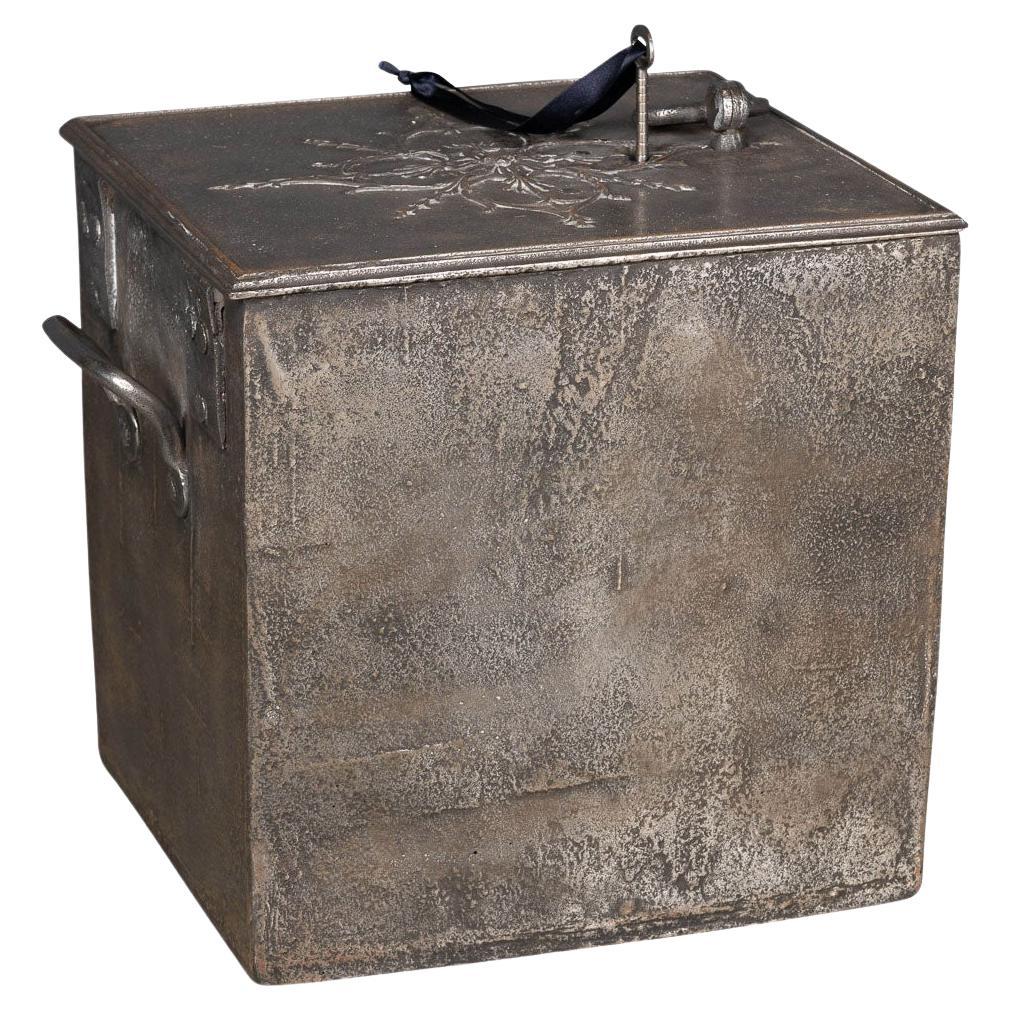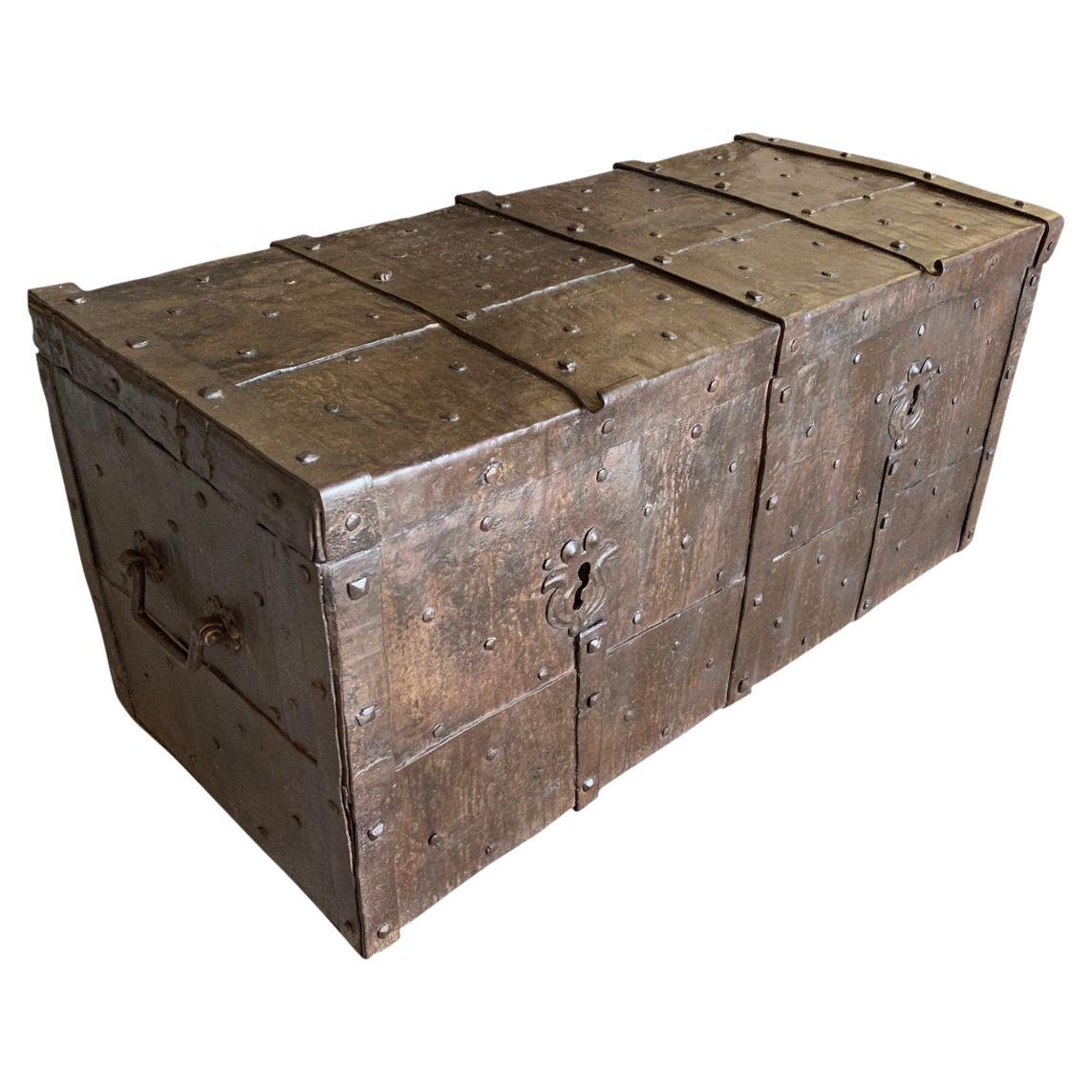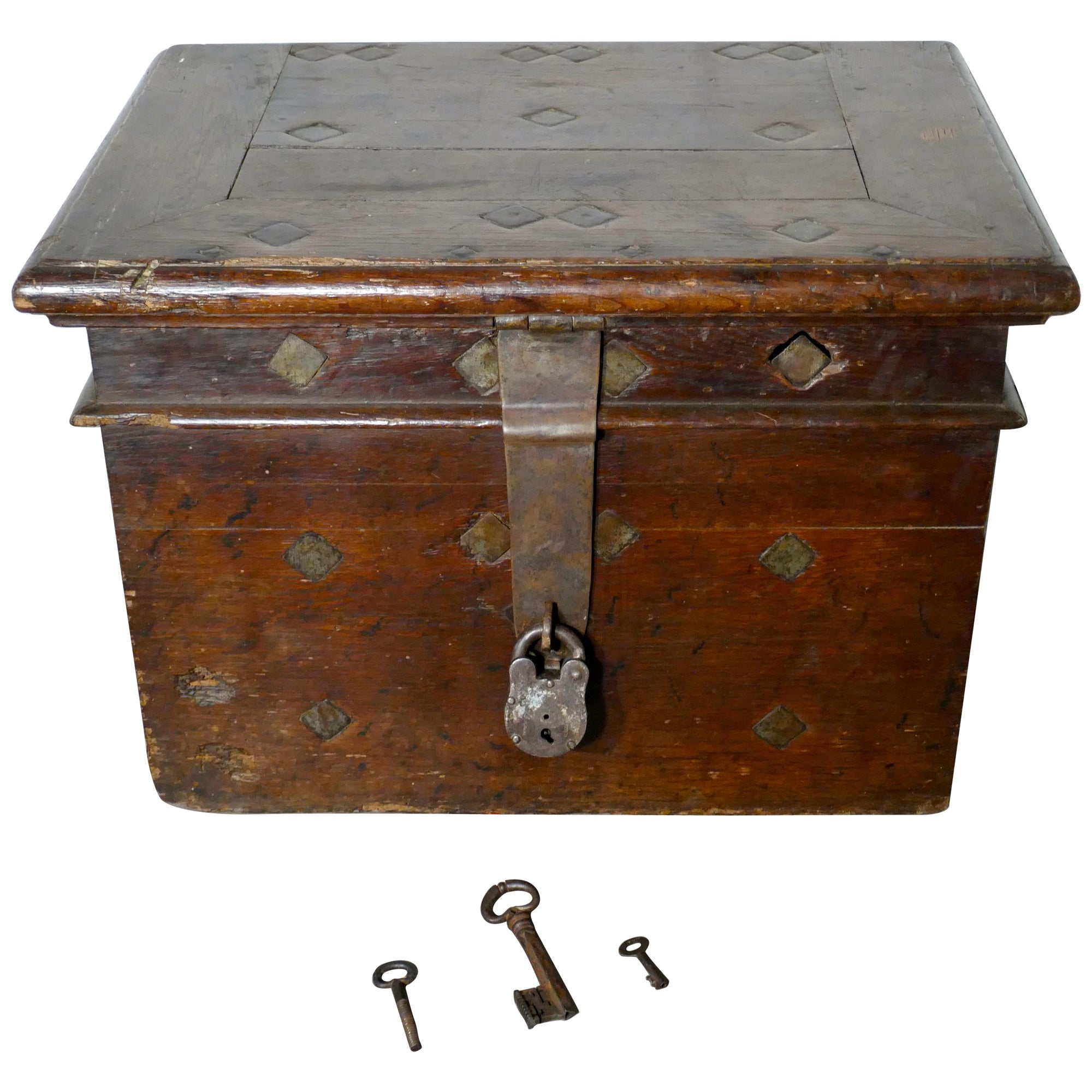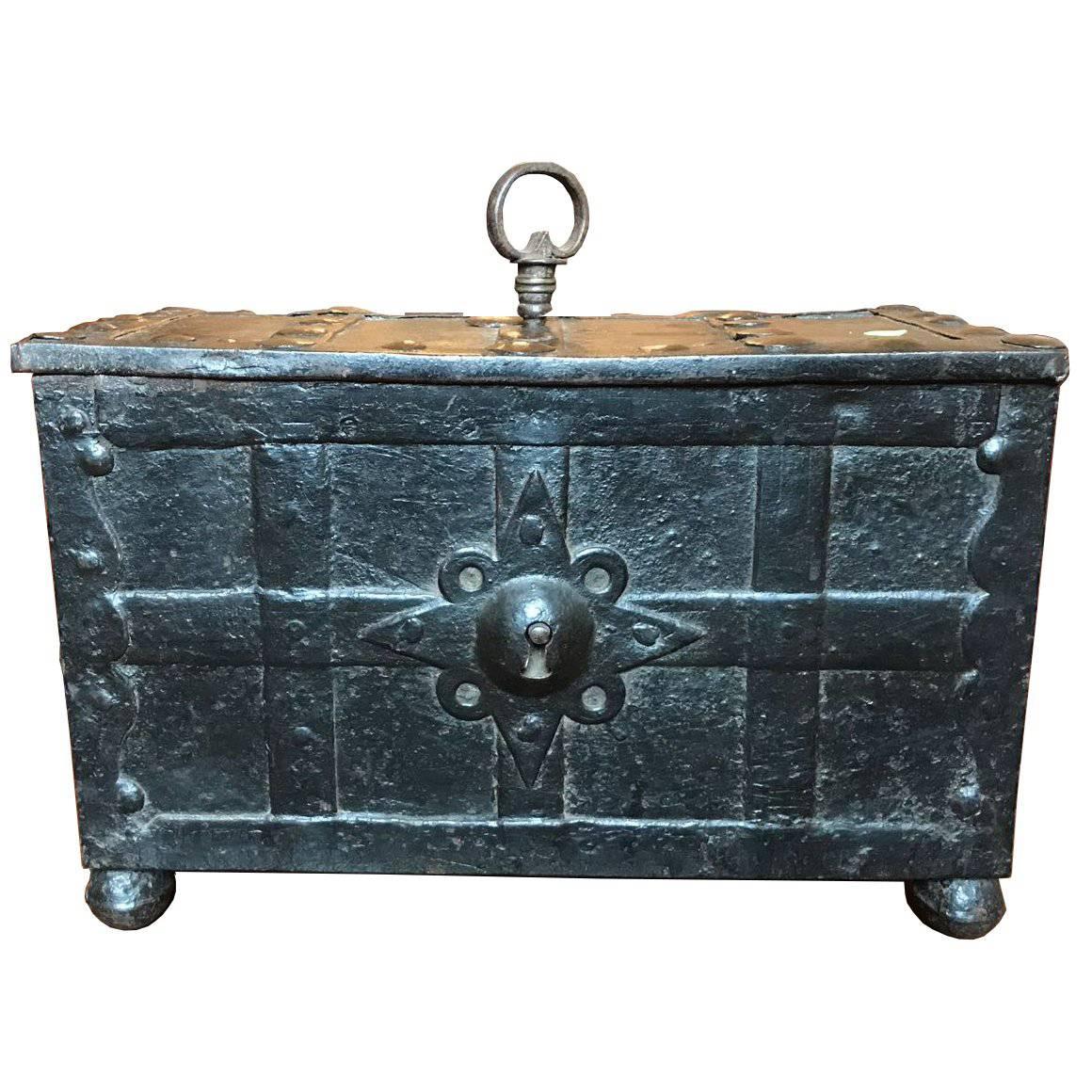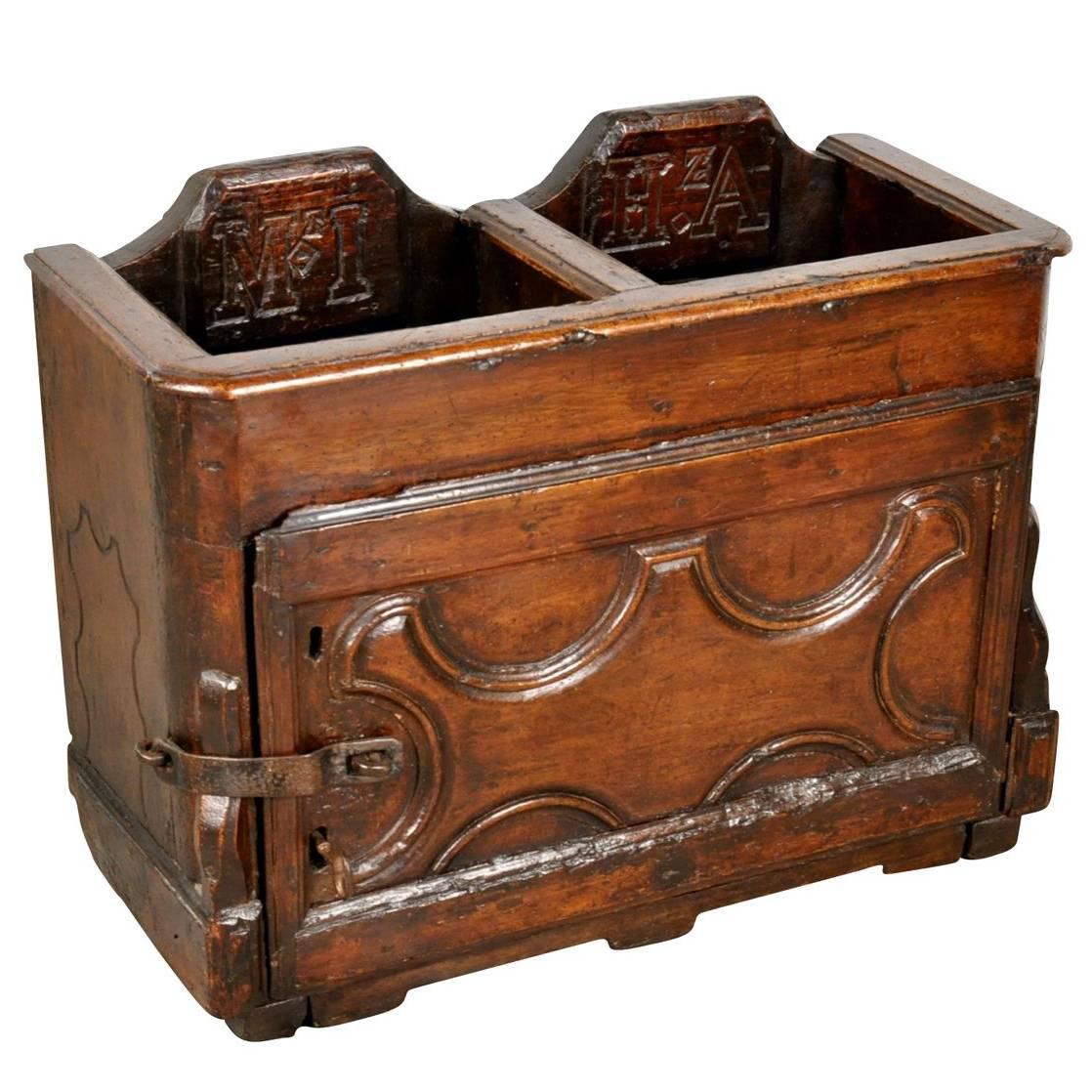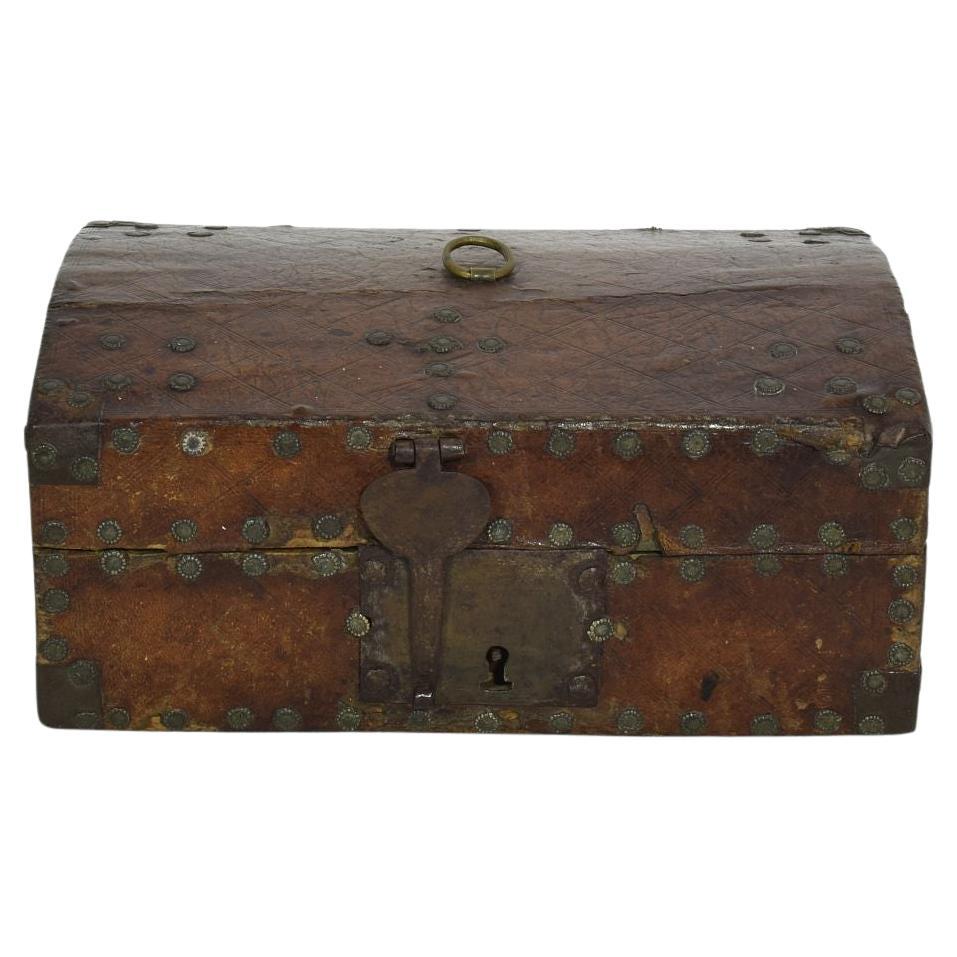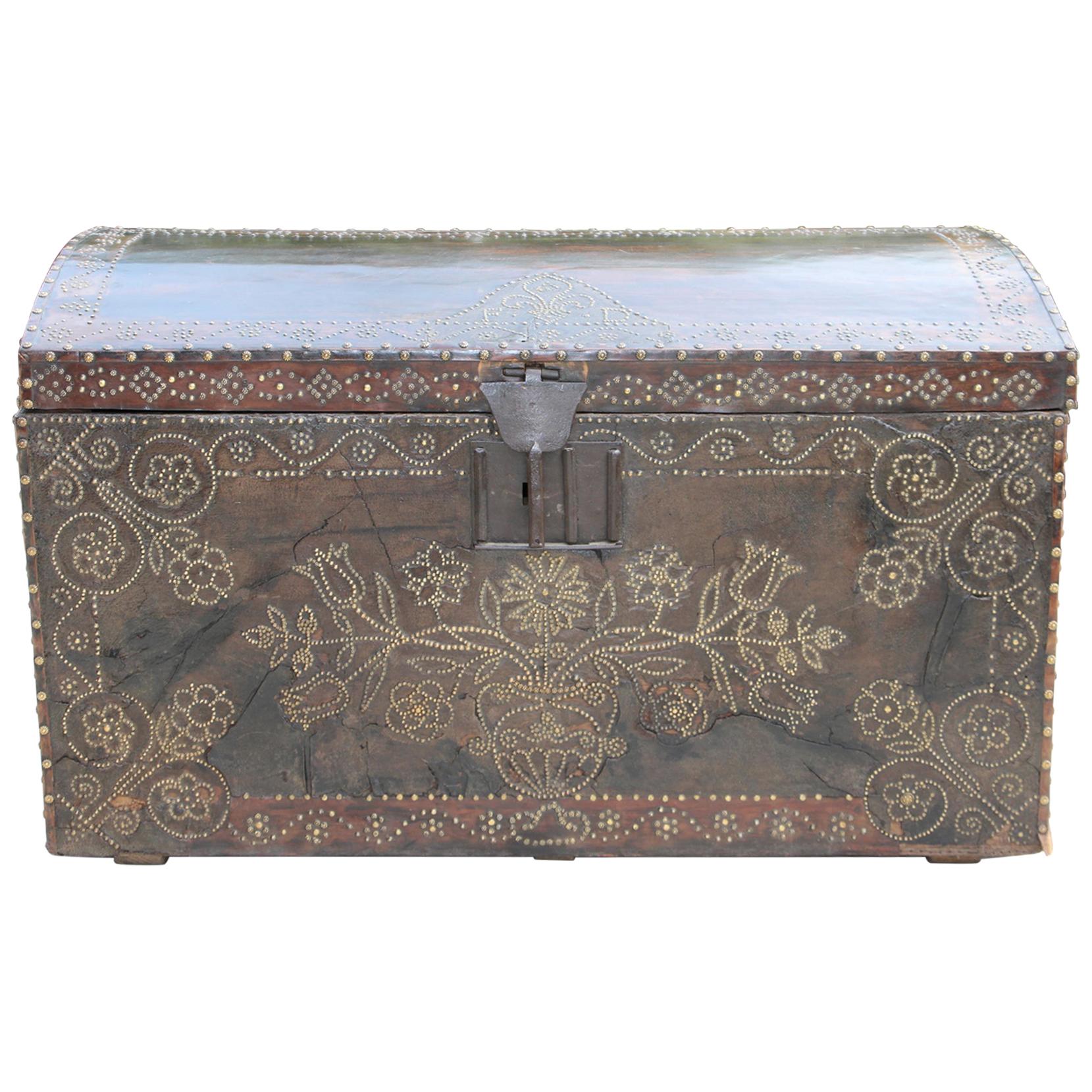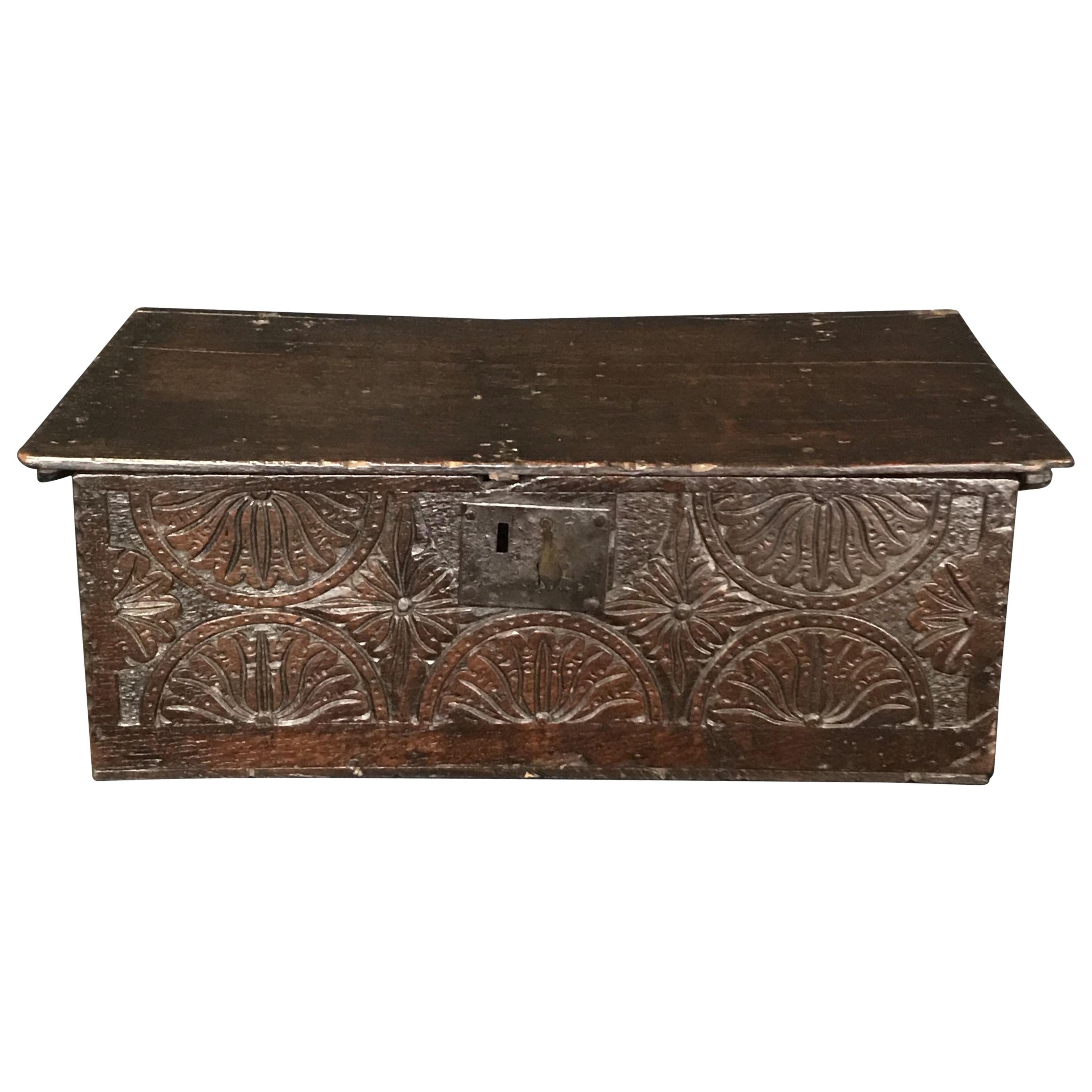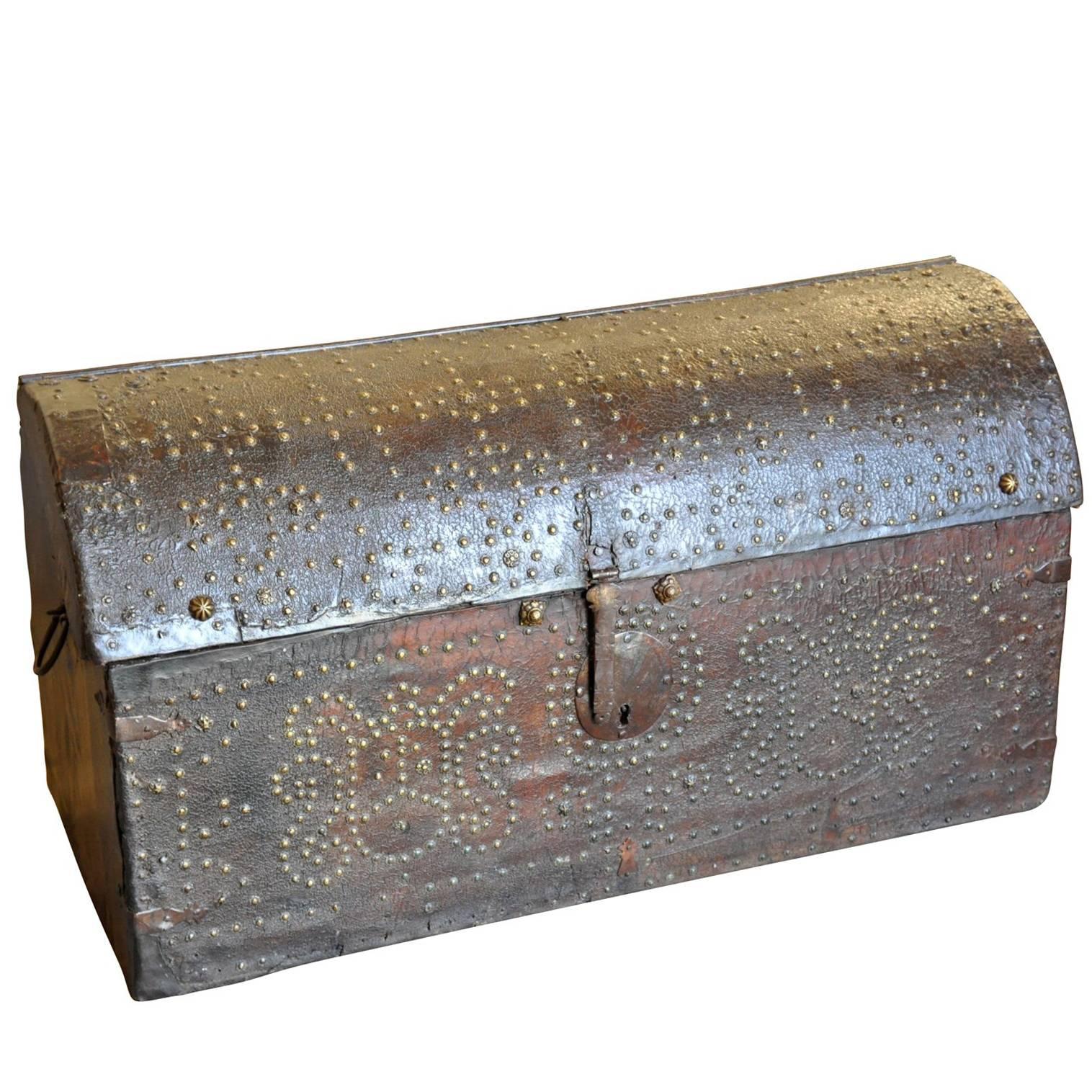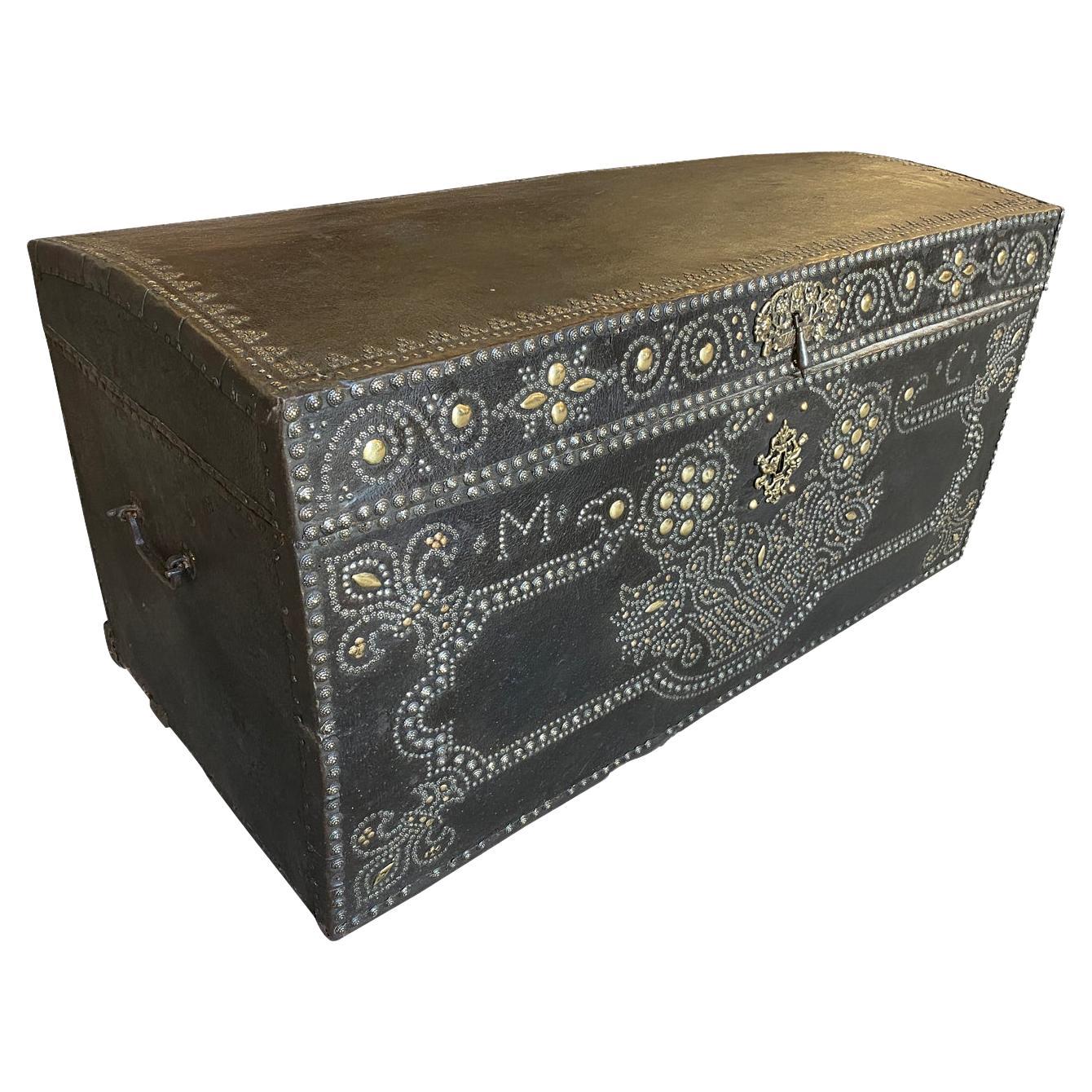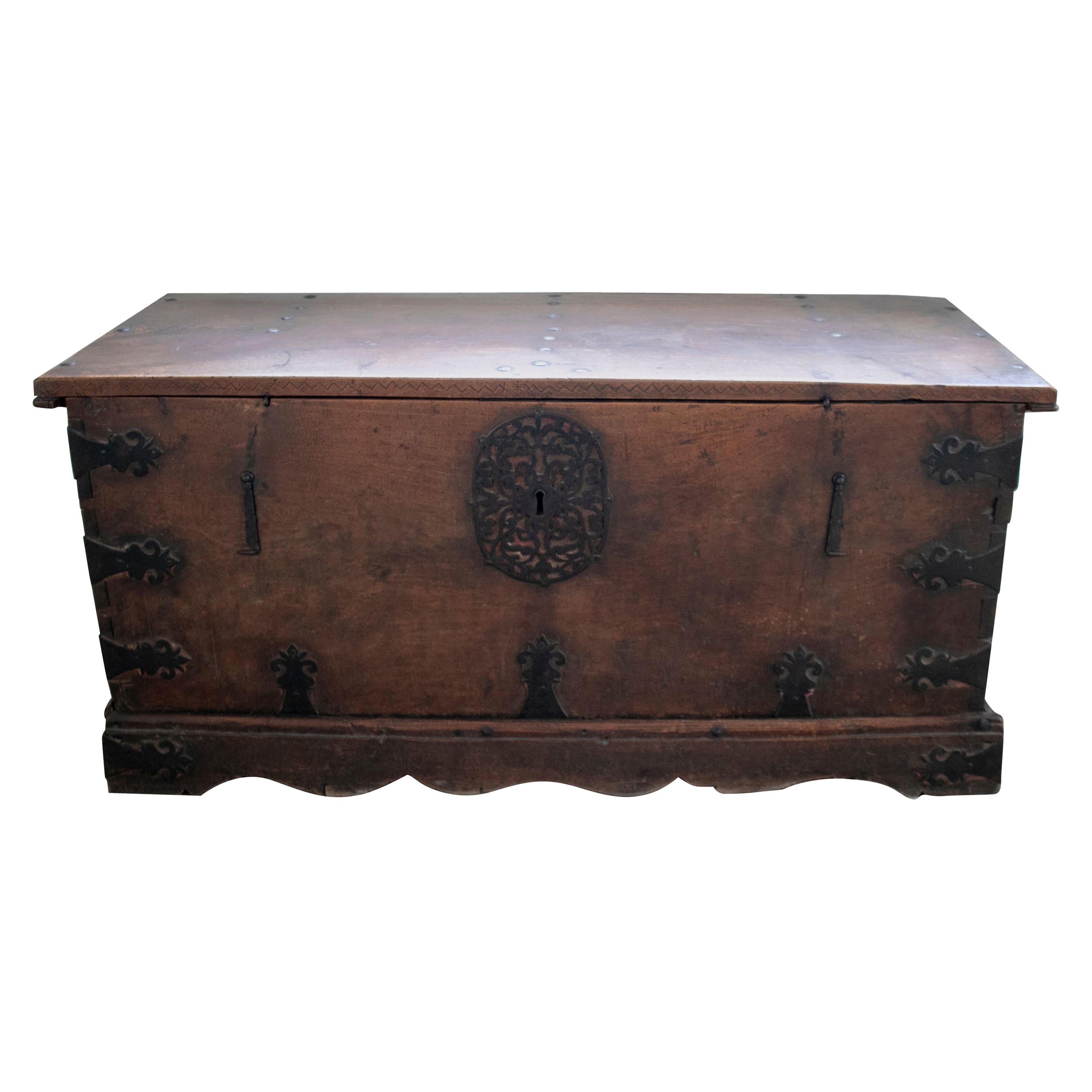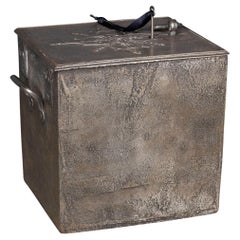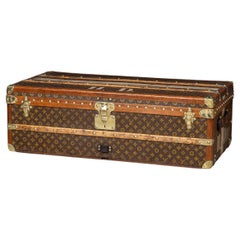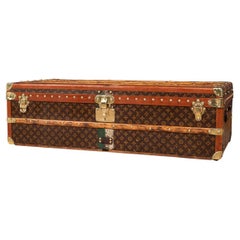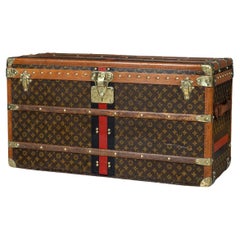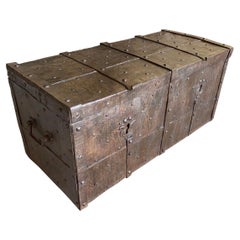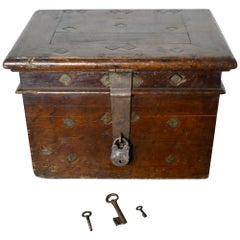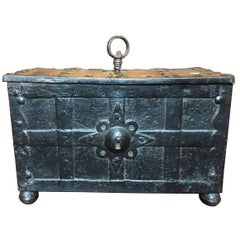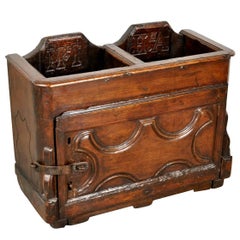
17th Century French Cast Iron Bound Strong Box, c.1690
View Similar Items
Want more images or videos?
Request additional images or videos from the seller
1 of 15
17th Century French Cast Iron Bound Strong Box, c.1690
$3,709.44List Price
About the Item
- Dimensions:Height: 11.82 in (30 cm)Width: 18.12 in (46 cm)Depth: 12.6 in (32 cm)
- Materials and Techniques:
- Place of Origin:
- Period:
- Date of Manufacture:circa 1690
- Condition:Wear consistent with age and use. Minor fading. In Good Condition - wear as expected.
- Seller Location:Royal Tunbridge Wells, GB
- Reference Number:Seller: D79541stDibs: LU1348228130212
About the Seller
5.0
Platinum Seller
Premium sellers with a 4.7+ rating and 24-hour response times
Established in 2014
1stDibs seller since 2015
508 sales on 1stDibs
Typical response time: 1 hour
Authenticity Guarantee
In the unlikely event there’s an issue with an item’s authenticity, contact us within 1 year for a full refund. DetailsMoney-Back Guarantee
If your item is not as described, is damaged in transit, or does not arrive, contact us within 7 days for a full refund. Details24-Hour Cancellation
You have a 24-hour grace period in which to reconsider your purchase, with no questions asked.Vetted Professional Sellers
Our world-class sellers must adhere to strict standards for service and quality, maintaining the integrity of our listings.Price-Match Guarantee
If you find that a seller listed the same item for a lower price elsewhere, we’ll match it.Trusted Global Delivery
Our best-in-class carrier network provides specialized shipping options worldwide, including custom delivery.More From This Seller
View All18th Century French Cast Iron Bound Strong Box, c.1740
Located in Royal Tunbridge Wells, Kent
Antique mid-18th century cast iron travel safe. Probably manufactured in France for storing money, important documents or jewellery. It would have been taken on long travels, perhaps on a long sea voyage or on the Orient express...
Category
Antique 18th Century French Trunks and Luggage
Materials
Iron
20th Century Louis Vuitton Trunk, France c.1930
By Louis Vuitton
Located in Royal Tunbridge Wells, Kent
An exquisite and complete Louis Vuitton trunk from the early part of the 20th century. An absolutely essential item for elite travellers of its time the trunk is adorned in the iconic LV monogrammed canvas, accented by lozine trim and brass fittings. This trunk stood as the epitome of luxury over 100 years ago, boasting an unparalleled level of sophistication and elegance, it remains a timeless masterpiece that transcends eras.
The captivating allure of the Louis Vuitton trunk transforms it into more than a mere luggage accessory; it becomes a focal point for any room. With its impressive dimensions, it is perfectly suited as a striking coffee table, side table, or even as a standalone centrepiece, seamlessly integrating into any interior, whether modern or traditional. An extraordinary piece that not only pays homage to the past but also serves as a statement of unparalleled luxury in the present.
A brief history about Louis Vuitton trunks: Louis Vuitton was born in 1821 to a farmer and milliner and came from a long-established working-class family in eastern France. Vuitton grew up understanding the effects of perseverance and a strong work ethic from watching his family. At the age of 16, he made the decision to walk 292 miles from his hometown to Paris to try and make a new life for himself. When he arrived the city was in the midst of industrialization with current modes of transportation evolving quickly allowing for longer journeys. With this came the need for sturdy travel pieces.
Vuitton was taken as an apprentice for a successful box maker and packer named Monsieur Marechal. He learned to craft durable containers and how to pack them properly – a well-respected profession at the time.In 1854, years after he had mastered his craft and became well respected for it, Vuitton ventured out on his own to open a shop on Rue Neuve des Capucines. It was here that he began to establish himself as a luggage maker. Then, in 1858, Vuitton designed the first Louis Vuitton steamer trunk. At the time trunks had rounded tops to allow for water to run off but this did not allow for convenient stowage. Vuitton introduced a flat, yet waterproof, trunk that was easily stackable. The first of his trunks were outfitted with a grey canvas referred to as Trianon – it wouldn’t be until several decades later that the signature monogram would be introduced.
With a burgeoning business, Vuitton moved his family and workplace to Asniere, where he employed twenty workers to craft his trunks. By 1900 he would have 100 employees, and in 1914 the company would more than double in size. After years of success, Vuitton began to experiment with the design of his luggage by introducing a new striped canvas pattern (1876) and later the still well-known Damier print (1888). The hand-painted patterns were developed to prevent counterfeits. Even in the late 1800s, Louis Vuitton was enough of a status symbol to warrant counterfeiting. In 1886, his son George invented and patented an ingenious locking system that made it impossible to pick the lock of their trunks. This lock is still used today.
1892 would prove to be a time of mourning for the family as Louis Vuitton passed...
Category
20th Century French Other Trunks and Luggage
Materials
Brass
20th Century Louis Vuitton Cabin Trunk, France, c.1910
By Louis Vuitton
Located in Royal Tunbridge Wells, Kent
Around the turn of the 19th and 20th century Louis Vuitton had established himself as a market leader in trunk making and needed to set his...
Category
20th Century French Trunks and Luggage
Materials
Leather, Canvas
20th Century Louis Vuitton Shoe Trunk, France c.1930
By Louis Vuitton
Located in Royal Tunbridge Wells, Kent
A magnificent and exceptionally rare Louis Vuitton shoe trunk, adorned with stencilled monogram canvas, lozine trim and brass fittings. Elevating its uniqueness is the remarkably uncommon size that distinguishes it from standard models. This extraordinary piece measures an impressive 90cm in length, an astounding 50% wider than the already scarce shoe trunks typically encountered. Dating back to the first half of the 20th century, this trunk was an indispensable possession for discerning elite travellers, evoking the grandeur of passenger ships and the first-class luxury of bygone eras.
Designed with the utmost attention to detail, this rare find is equipped with its original lift-out trays, showcasing the timeless craftsmanship that has come to define Louis Vuitton...
Category
20th Century French Other Trunks and Luggage
Materials
Brass
20th Century Louis Vuitton Shoe Trunk, France c.1930
By Louis Vuitton
Located in Royal Tunbridge Wells, Kent
A magnificent and exceptionally rare Louis Vuitton shoe trunk, adorned with stencilled monogram canvas, lozine trim and brass fittings. Elevating its uniqueness is the remarkably unc...
Category
20th Century French Other Trunks and Luggage
Materials
Brass
20th Century Louis Vuitton Cow Hide Suitcase, France c.1920
By Louis Vuitton
Located in Royal Tunbridge Wells, Kent
A highly unusual and exceptionally rare Louis Vuitton suitcase, originating from the early years of the 20th century, distinguishes itself not with the globally renowned monogram canvas but with a distinctive covering crafted from a singular piece of cowhide. This unique piece represents a special order from Louis Vuitton, showcasing the brand's historical commitment to utilizing only the finest hides available.
Unlike many of its counterparts, leather trunks and cases of this era often struggle to withstand the test of time, requiring regular treatments to prevent drying and disintegration. Remarkably, this particular example defies the odds, retaining the same supple quality it possessed on the day it first graced the shop floor. This suitcase belongs to Louis Vuitton's collection of "speciality materials," which encompasses a diverse range, including, but not limited to, zinc, copper, crocodile leather, and cow leather.
A brief history about Louis Vuitton trunks: Louis Vuitton was born in 1821 to a farmer and milliner and came from a long-established working-class family in eastern France. Vuitton grew up understanding the effects of perseverance and a strong work ethic from watching his family. At the age of 16, he made the decision to walk 292 miles from his hometown to Paris to try and make a new life for himself. When he arrived the city was in the midst of industrialization with current modes of transportation evolving quickly allowing for longer journeys. With this came the need for sturdy travel pieces.
Vuitton was taken as an apprentice for a successful box maker and packer named Monsieur Marechal. He learned to craft durable containers and how to pack them properly – a well-respected profession at the time.In 1854, years after he had mastered his craft and became well respected for it, Vuitton ventured out on his own to open a shop on Rue Neuve des Capucines. It was here that he began to establish himself as a luggage maker. Then, in 1858, Vuitton designed the first Louis Vuitton steamer trunk. At the time trunks had rounded tops to allow for water to run off but this did not allow for convenient stowage. Vuitton introduced a flat, yet waterproof, trunk that was easily stackable. The first of his trunks were outfitted with a grey canvas referred to as Trianon – it wouldn’t be until several decades later that the signature monogram would be introduced.
With a burgeoning business, Vuitton moved his family and workplace to Asniere, where he employed twenty workers to craft his trunks. By 1900 he would have 100 employees, and in 1914 the company would more than double in size. After years of success, Vuitton began to experiment with the design of his luggage by introducing a new striped canvas pattern (1876) and later the still well-known Damier print (1888). The hand-painted patterns were developed to prevent counterfeits. Even in the late 1800s, Louis Vuitton was enough of a status symbol to warrant counterfeiting. In 1886, his son George invented and patented an ingenious locking system that made it impossible to pick the lock of their trunks. This lock is still used today.
1892 would prove to be a time of mourning for the family as Louis Vuitton passed...
Category
20th Century French Other Trunks and Luggage
Materials
Brass
You May Also Like
Italian 17th Century Coffre Forte, Strong Box
Located in Round Top, TX
An exceptional 17th century Coffre Forte - Strong Box from the Lombardy area of Italy. Expertly crafted from iron with side handles, iron strapping and nail head detailing. Serves wo...
Category
Antique Mid-17th Century Italian Trunks and Luggage
Materials
Iron
17th Century French Coffer, Oak Silver Treasure Chest, Strong Box
Located in Godshill, Isle of Wight
17th Century French Coffer, Oak Silver Treasure Chest, Strong Box
A Very Rare piece, this Oak Coffer was made in the 16th Century in 3” thick Oak, lined inside and strengthened thro...
Category
Antique 17th Century Elizabethan Trunks and Luggage
Materials
Oak
Early 17th Century Medieval Handcrafted Black Iron Coffer or Box
Located in Brescia, IT
The iron coffer, fully original in every part of it, was forged and handcrafted in German in the 1610. Complete with key. Full working iron mechanisms. It ...
Category
Antique Early 17th Century German Medieval Decorative Boxes
Materials
Iron
Italian 17th Century Primitive Collection Box
Located in Round Top, TX
A rare and unique church collection box from Northern Italy. Beautifully constructed from thick planks of walnut with intriguing carving detail. A wonde...
Category
Antique Mid-17th Century Italian Decorative Boxes
Materials
Walnut
Small 17th Century, French Coffer or Box in Leather
Located in Buisson, FR
Extremely old box that is covered with leather and metal decorations.
Rare find.
France, circa 1600-1700
Weathered and some losses.
Category
Antique 17th Century French Decorative Boxes
Materials
Leather, Wood
$952 Sale Price
49% Off
17th Century Leather Trunk, 17th Century Chest
Located in Saint-Ouen, FR
Very unique piece,this 17th century trunk features brown leather and a wonderful job of flowers drawing made with little brass studs.
It has got 2 iron side handles and an iron lock...
Category
Antique 17th Century French Commodes and Chests of Drawers
Materials
Leather, Wood
Recently Viewed
View AllMore Ways To Browse
Orient Express Furniture
17th Century Strong Box
Cast Iron Strong Box
Antique Cast Iron Strong Box
Antique Sea Trunks
Antique Cast Iron Money Box
Louis Vuitton Coffee
Louis Vuitton Coffee Table
Trunk Compartments
Vintage Suitcase
Louis Vuitton Brown Paint
Leather Paint Louis Vuitton
French Marechal
Old Trunks
Travel Trunk Wood
Established And Sons Stack
Louis Vitton Watch
Small Trunks
